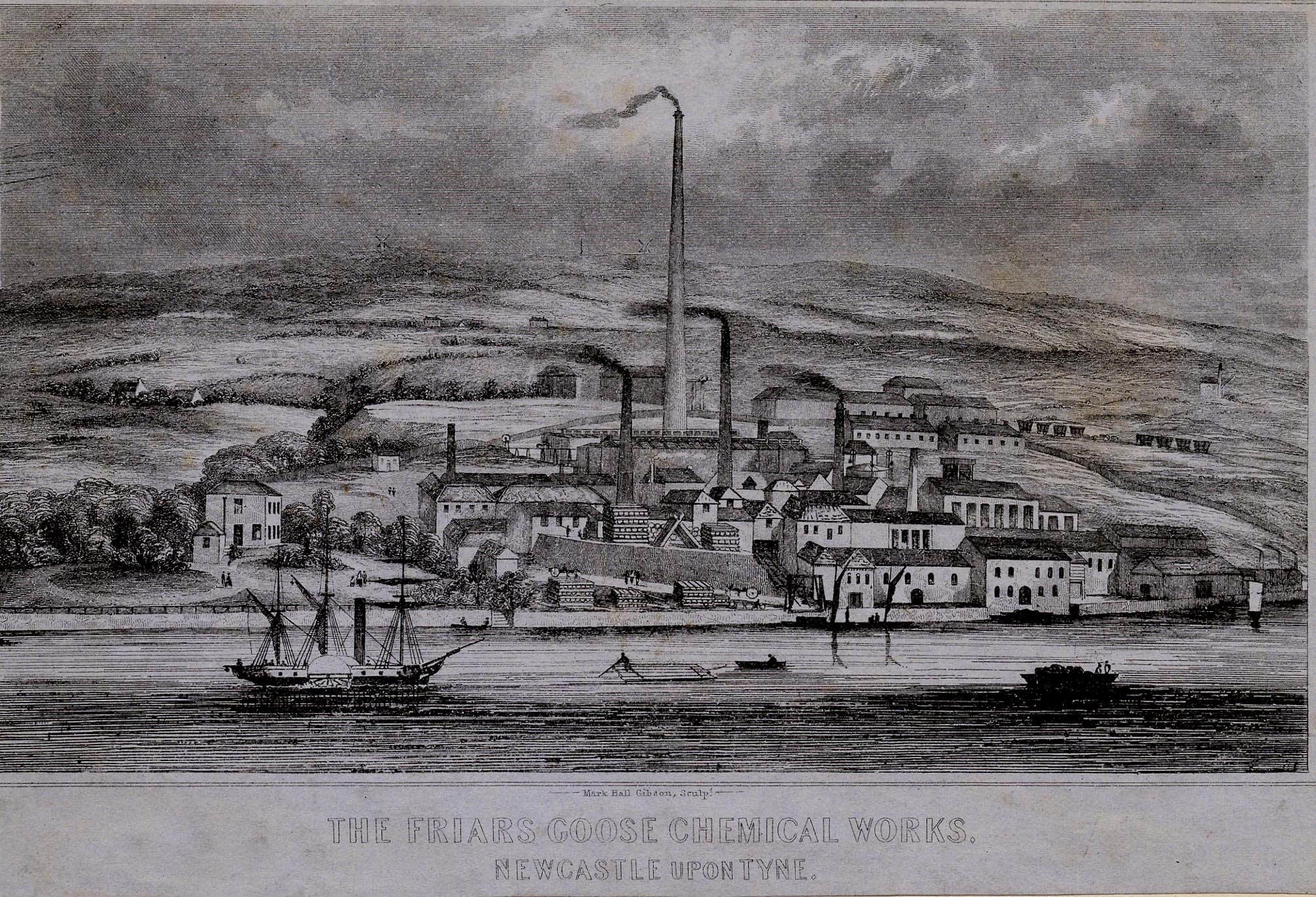
Friar's Goose Chemical Works
Friar's Goose Chemical Works
HER Number
3537
District
Gateshead
Site Name
Friar's Goose Chemical Works
Place
Felling
Map Sheet
NZ26SE
Class
Industrial
Site Type: Broad
Chemical Industry Site
Site Type: Specific
Chemical Works
General Period
POST MEDIEVAL
Specific Period
Hanoverian 1714 to 1837
Form of Evidence
Documentary Evidence
Description
In 1827 Friar's Goose Chemical Works was established by Anthony Clapham, who had been harassed out of a number of works in the North-East after complaints of pollution caused by his factories. Soap making was conducted at the site until 1829 and by 1831 the works had been altered to become a caustic works operating the Leblanc process, mainly producing bicarbonate of soda and Epsom Salts. In a misguided attempt to alleviate pollution, Clapham's Chimney, 263 feet high and the highest on Tyneside at the time was built in 1833. In 1891 Works were taken over by the United Alkali Company (which eventually became ICI) where production concentrated on caustic soda (sodium hydroxide) for use in the textile industry. The banks of the Tyne provided an ideal location in terms of water resources, availability of coal and access for the import and export of goods. Many of the workers in the chemical industry came from Ireland, driven out by the potato famine. Working conditions were appalling; acid burns were commonplace and the workforce had to wrap layer upon layer of flannel over their faces to try to filter the poisonous fumes. In 1926 the United Alkali Company became part of ICI and the Gateshead works were run down and by 1942 they had closed. The spoil area from the Friar's Goose Works was incorporated in East Gateshead Riverside Park.
Easting
427530
Northing
563300
Grid Reference
NZ427530563300
Sources
<< HER 3537 >> 1st edition Ordnance Survey Map, c.1855, 6 inch scale, Durham, 3
T.Oliver, 1831, A Perambulatory Survey, in A picture of Newcastle upon Tyne, pp 137-138
Environment Technology Consultants Ltd, 1995, Site Investigation of Felling Riverside; University of Newcastle upon Tyne Department of Extra-Mural Studies, 1961, The Old Tyneside Chemical Trade, chapter XI, page 30
T.Oliver, 1831, A Perambulatory Survey, in A picture of Newcastle upon Tyne, pp 137-138
Environment Technology Consultants Ltd, 1995, Site Investigation of Felling Riverside; University of Newcastle upon Tyne Department of Extra-Mural Studies, 1961, The Old Tyneside Chemical Trade, chapter XI, page 30